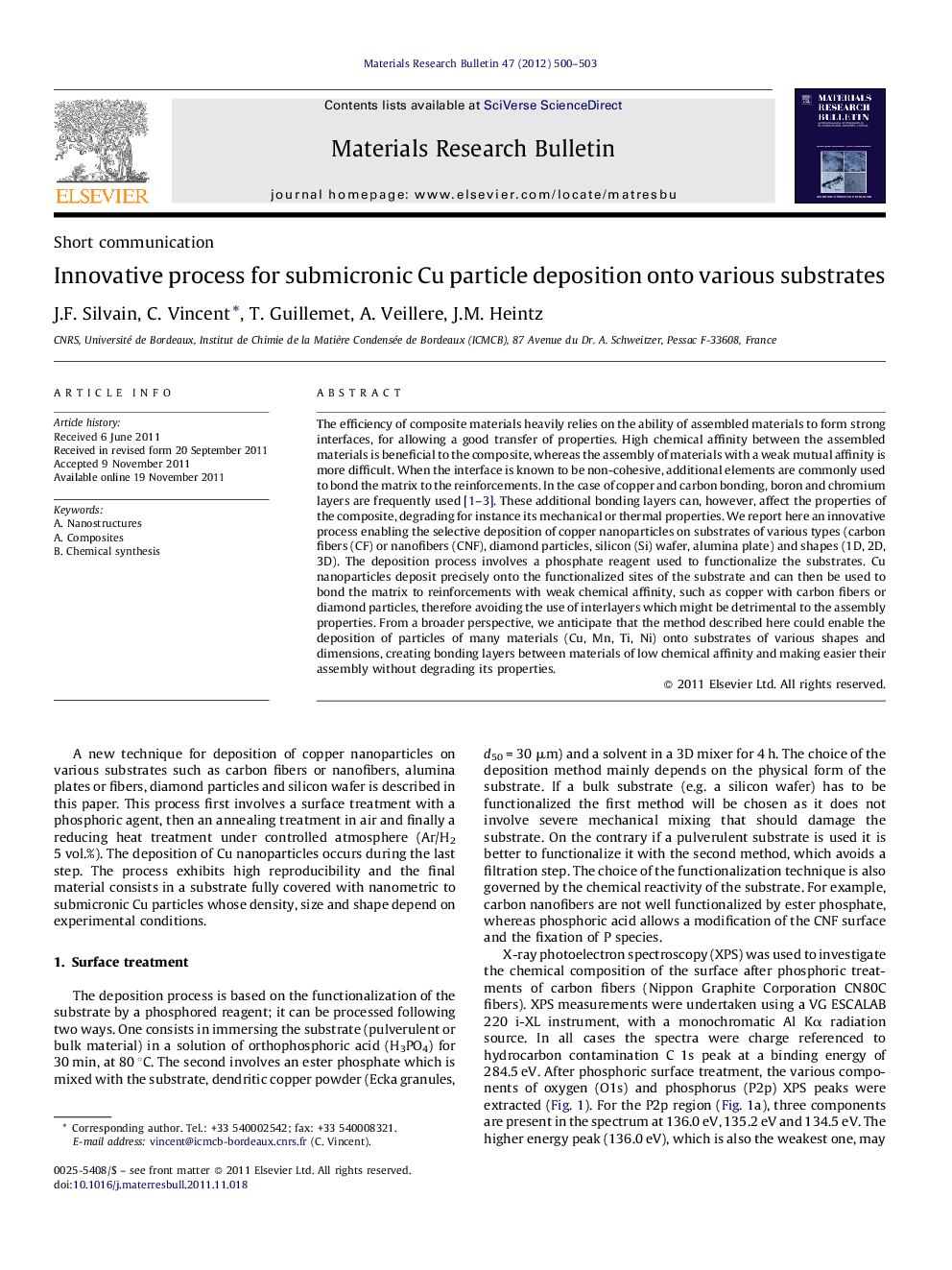| کد مقاله | کد نشریه | سال انتشار | مقاله انگلیسی | نسخه تمام متن |
|---|---|---|---|---|
| 1490657 | 992329 | 2012 | 4 صفحه PDF | دانلود رایگان |

The efficiency of composite materials heavily relies on the ability of assembled materials to form strong interfaces, for allowing a good transfer of properties. High chemical affinity between the assembled materials is beneficial to the composite, whereas the assembly of materials with a weak mutual affinity is more difficult. When the interface is known to be non-cohesive, additional elements are commonly used to bond the matrix to the reinforcements. In the case of copper and carbon bonding, boron and chromium layers are frequently used [1], [2] and [3]. These additional bonding layers can, however, affect the properties of the composite, degrading for instance its mechanical or thermal properties. We report here an innovative process enabling the selective deposition of copper nanoparticles on substrates of various types (carbon fibers (CF) or nanofibers (CNF), diamond particles, silicon (Si) wafer, alumina plate) and shapes (1D, 2D, 3D). The deposition process involves a phosphate reagent used to functionalize the substrates. Cu nanoparticles deposit precisely onto the functionalized sites of the substrate and can then be used to bond the matrix to reinforcements with weak chemical affinity, such as copper with carbon fibers or diamond particles, therefore avoiding the use of interlayers which might be detrimental to the assembly properties. From a broader perspective, we anticipate that the method described here could enable the deposition of particles of many materials (Cu, Mn, Ti, Ni) onto substrates of various shapes and dimensions, creating bonding layers between materials of low chemical affinity and making easier their assembly without degrading its properties.
Figure optionsDownload as PowerPoint slideHighlights
► New process for deposition of copper nanoparticles onto various substrates.
► Functionalization with phosphorus to enhance chemical bonding between Cu and substrate.
► Control of size, number and location of the deposited particles.
► Applicable to other metals, possibility to solve problems of assembling in many fields.
Journal: Materials Research Bulletin - Volume 47, Issue 2, February 2012, Pages 500–503